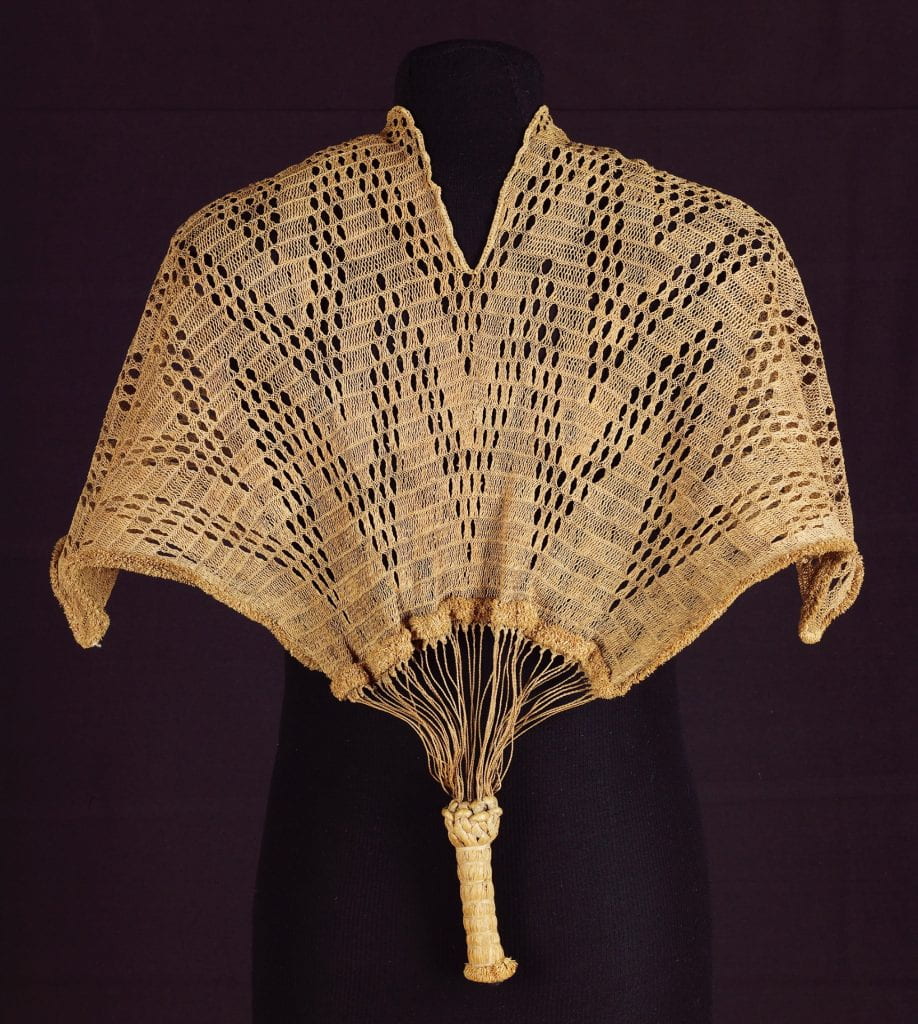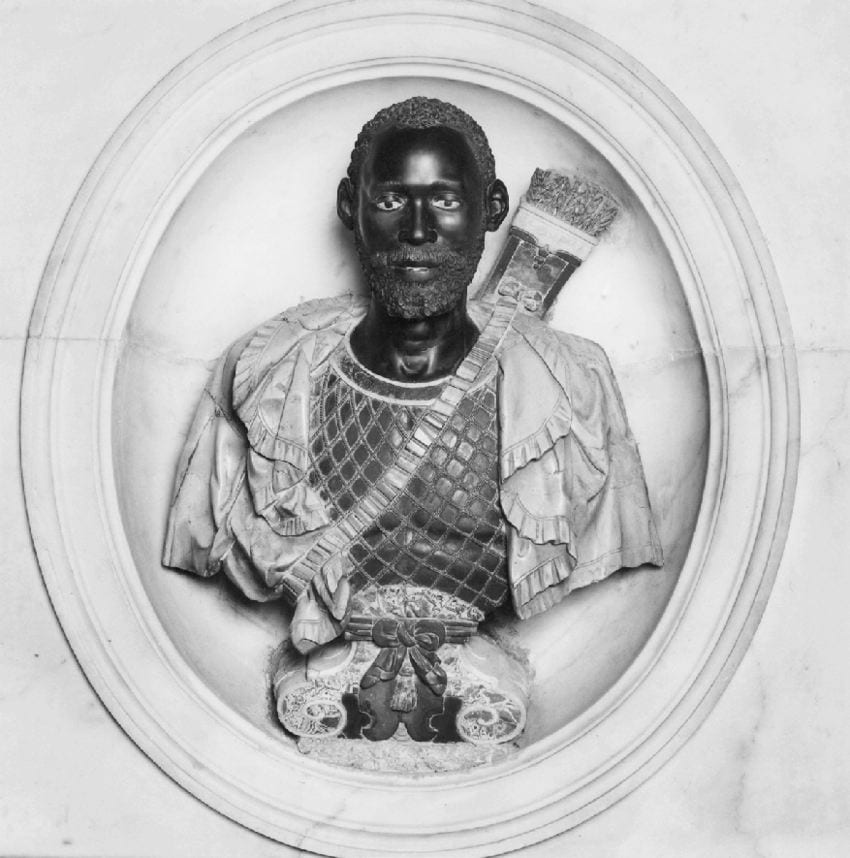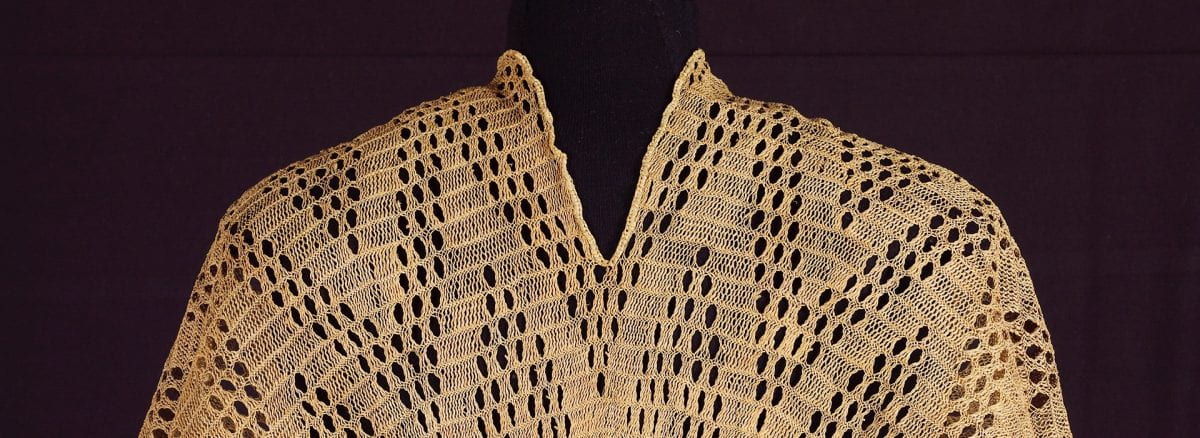From the 14th to 18th century, the Kingdom of Kongo was one of the largest in the world. Covering much of modern-day Angola, the Republic of the Congo and the Democratic Republic of the Congo, the kingdom maintained diplomatic and trade relations throughout the world until the late 1800s.
High-status Kongo men wore capes like this example, along with other regalia indicating their elevated status such as the “mpu,” or chief’s cap. The cape was worn next to the skin, with a tassel or handle hanging in front and down the back.

This cape is made of fiber from the raffia palm tree unique to the region of the former Kingdom of Kongo. The raffia fibers extend from the two handles of the cape, expanding into yarns used to craft the body. The body’s structure consists of an openwork technique known as looping, where warp yarns are twisted or looped by hand to form a flexible netted or mesh textile capable of expanding and contracting. A short pile trim embellishes the edges of the cape.
This style of cape was worn by Kongo elites over hundreds of years. One of the earliest surviving depictions is found on the memorial bust of the Marquis of Ne Vunda, Antonio Manuel, in Rome. Antonio Manuel was sent to Rome as the Kingdom of Kongo’s ambassador to the Vatican but died just days after his arrival in 1608. The existence of this bust testifies both to the respect the Vatican held for the ambassador and to the prestige of the Kongolese garments in which he is depicted.

Researched by Catherine Seibert
Catherine Seibert has been a docent with the museum since 2012. She previously worked for the World Bank.
